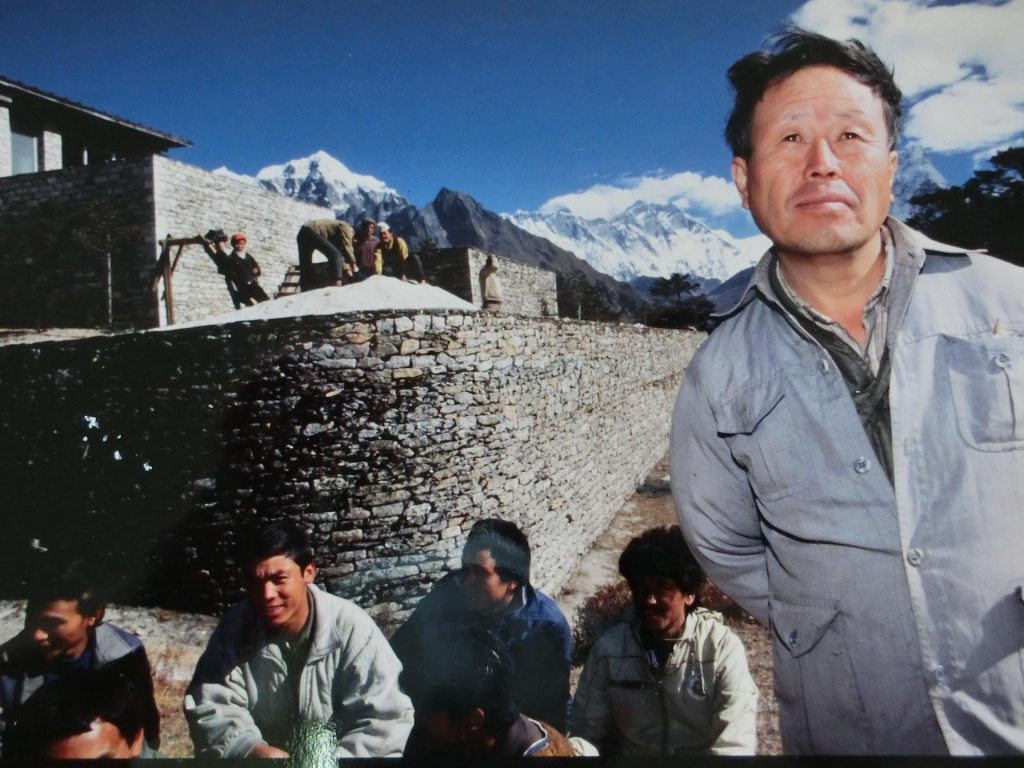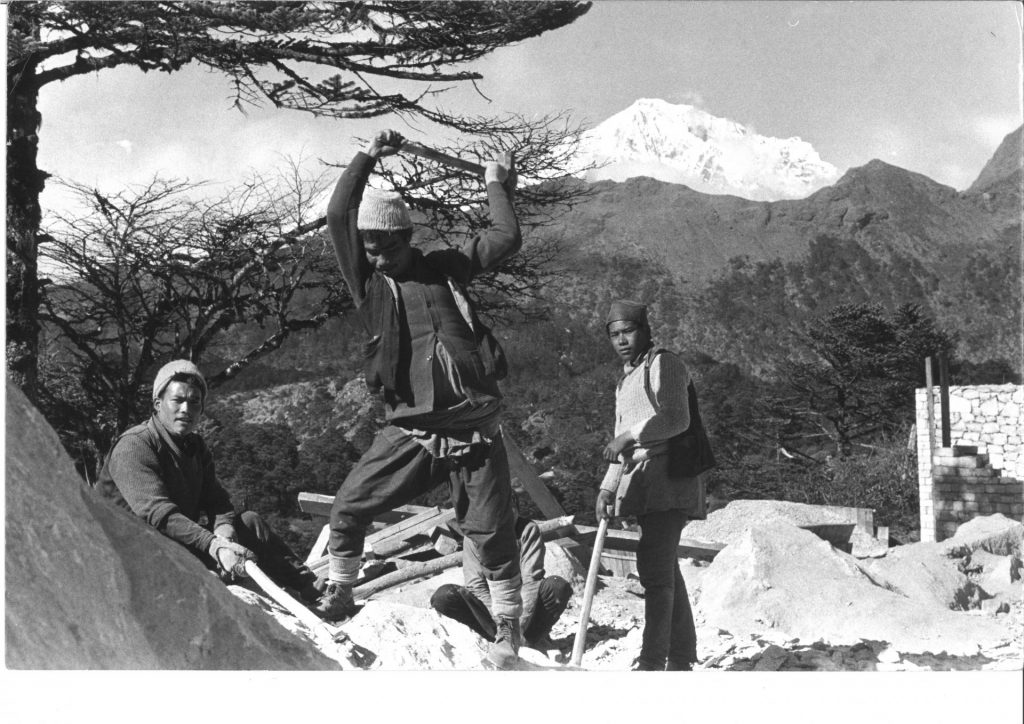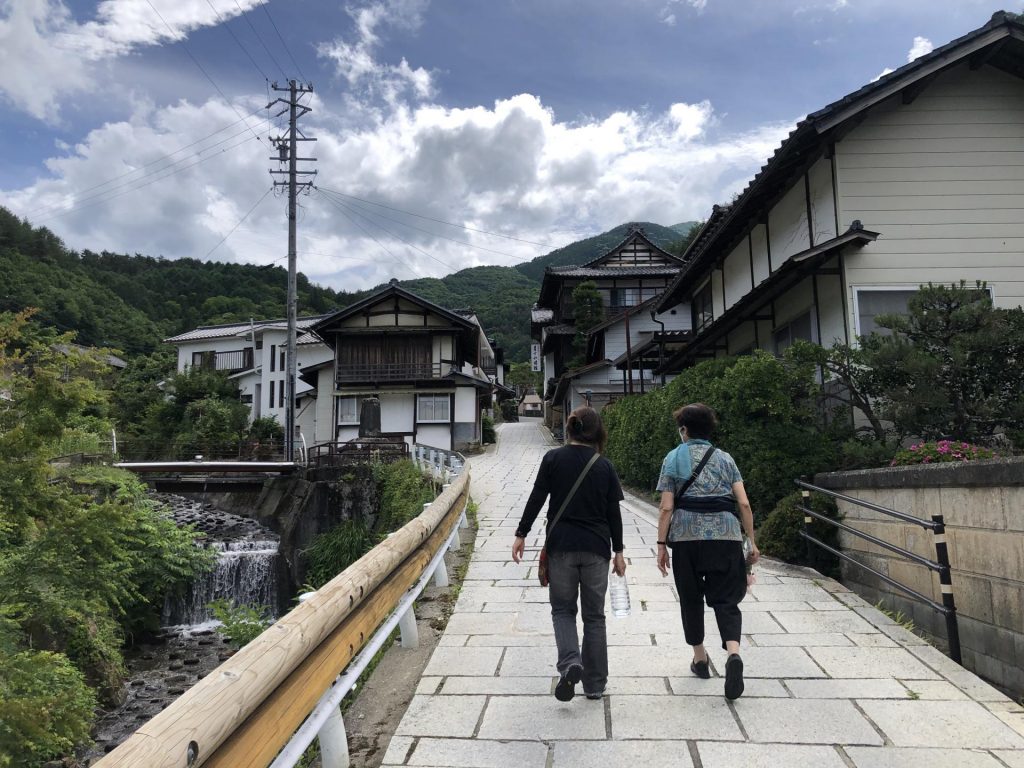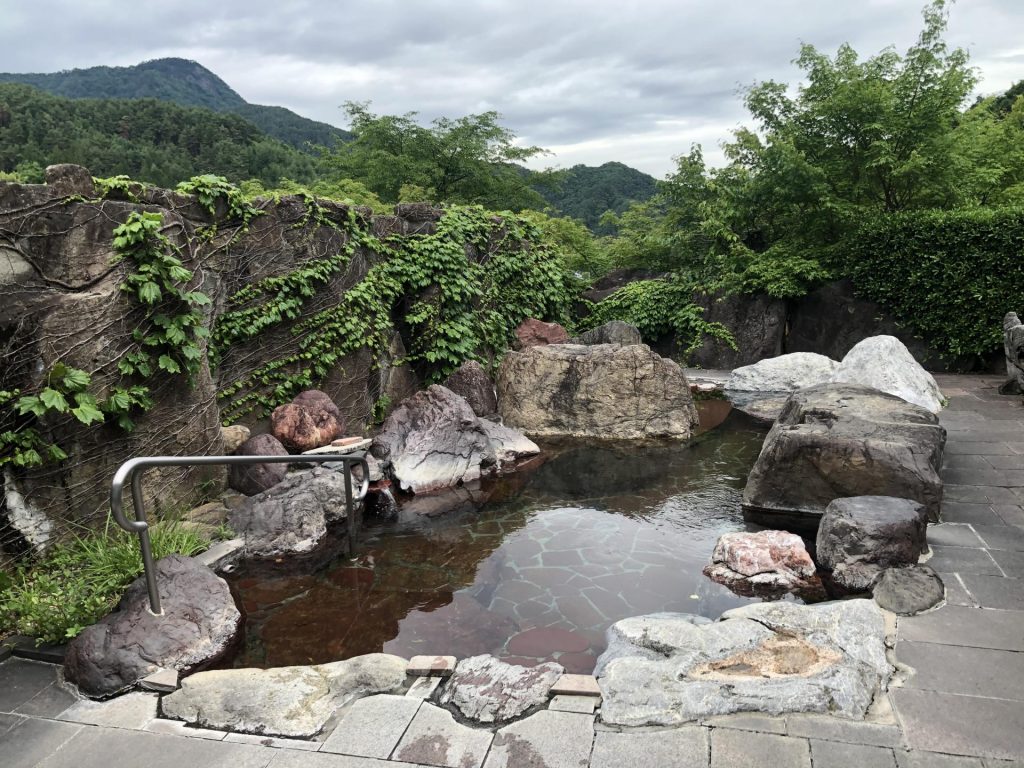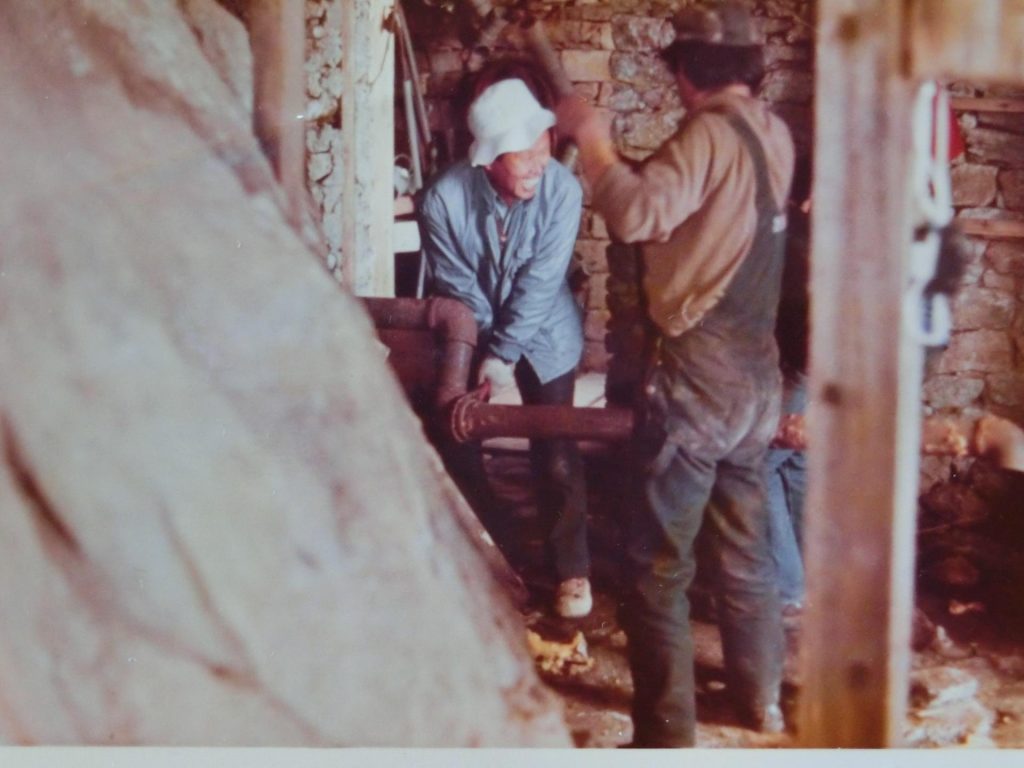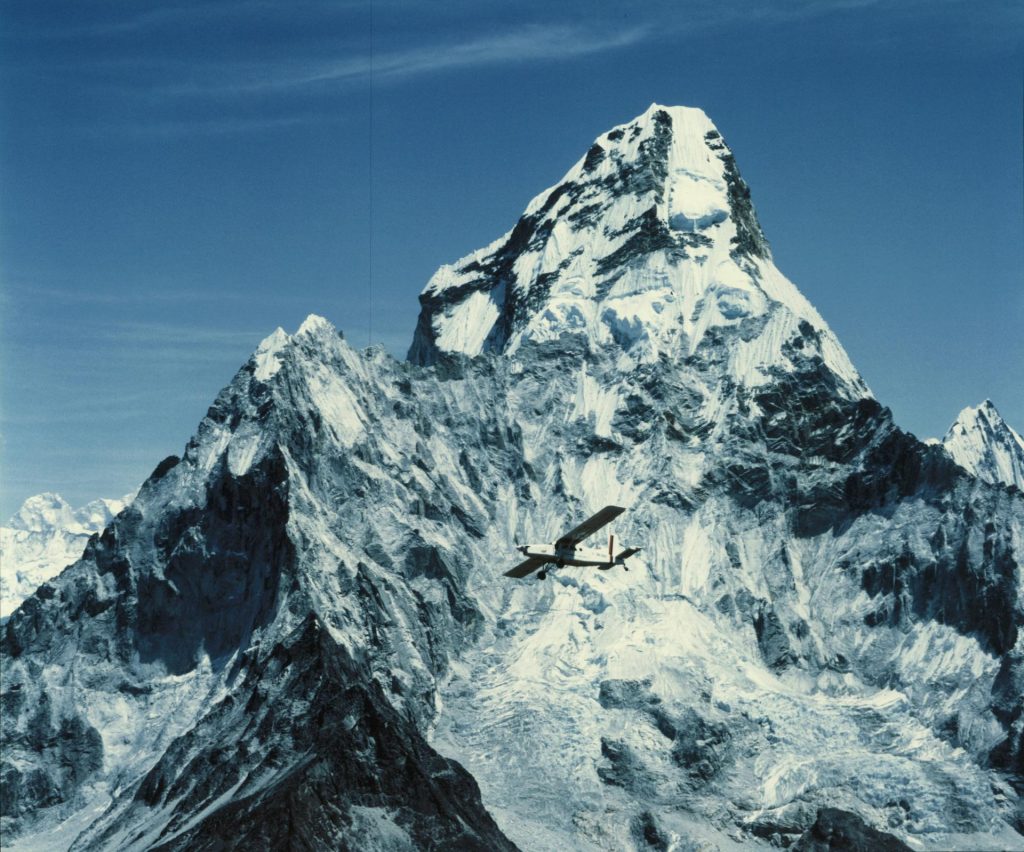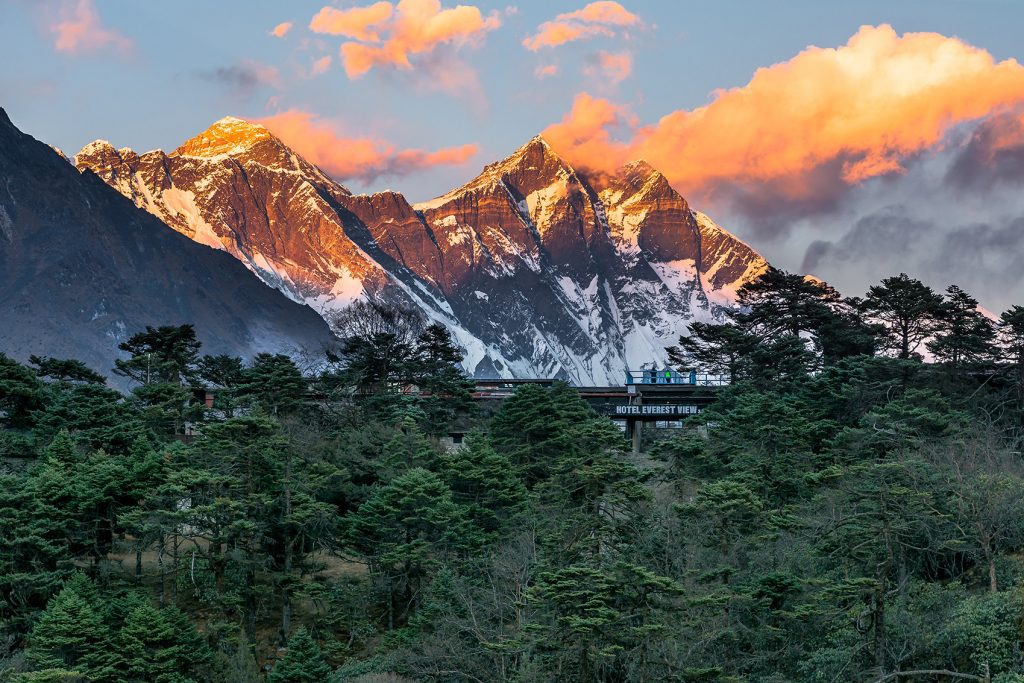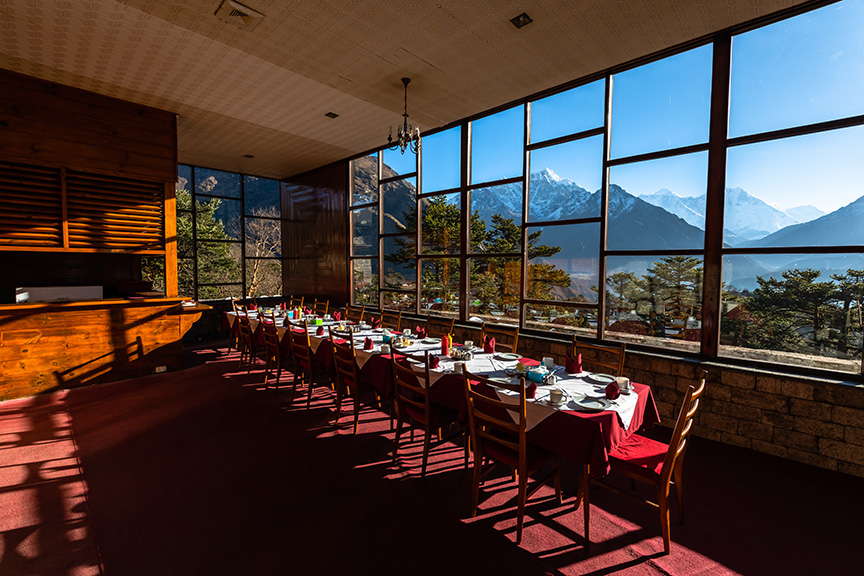Constructing a hotel at 3,880 meters is not an easy task. Back in the 1960s it was monumental. In 1968, entrepreneur Takashi Miyahara defied expectations and built the world’s highest hotel in the Himalayas. Driven by his passion for Nepal and mountaineering, he garnered support from the local Nepalese government to not only build Hotel Everest View but also make the Himalayas a sustainable tourist destination by providing jobs to locals living in the Himalayas. The construction of Hotel Everest View took several years and relied heavily on local Sherpa porters who carried food and supplies on a two-week trek from Lamusangu.
Visitors from the world over headed to the hotel when it first opened its doors in 1971, with the 360 views of the Himalayan mountain range taking their breath away. The project was praised not only for the hotel providing stellar views of Mt. Everest and the surrounding Himalayas, but also how Miyahara’s team literally paved the trail for travelers of all ages to experience Mt. Everest.
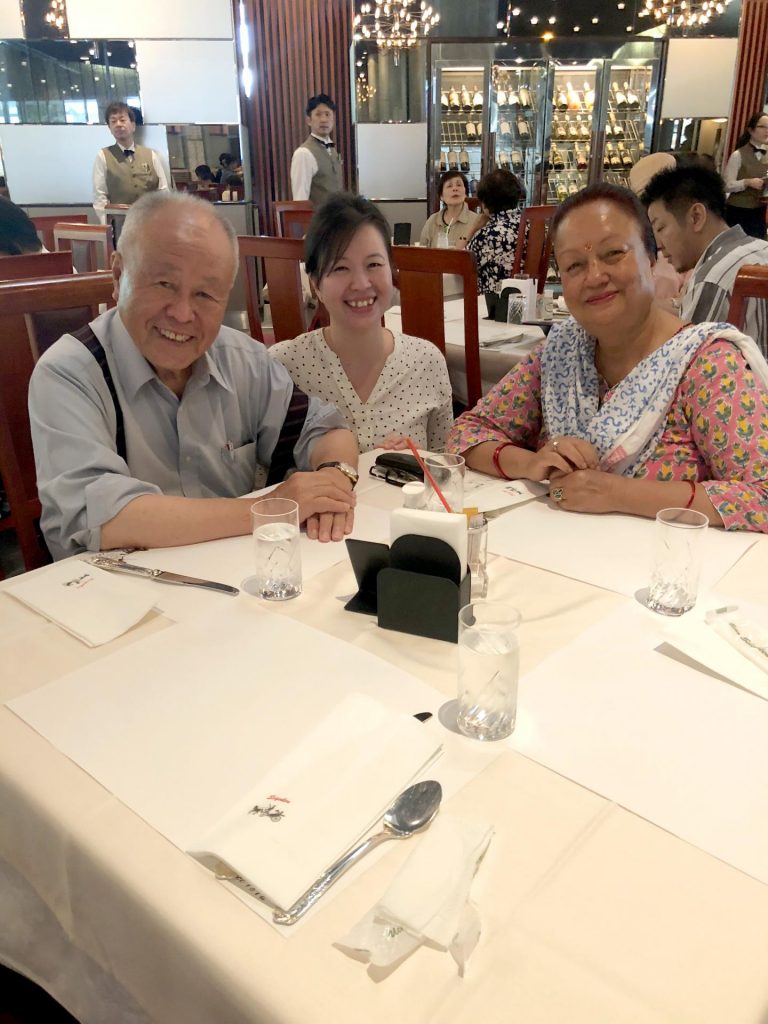
Miyahara passed away in November 2019 at the age of 84, leaving behind his stone-terraced hotel. Hotel Everest View was listed on the Guinness Book of World Records in 2004 as the highest hotel in the world. It has been surpassed since then, but remains a popular travel destination for those exploring the Khumbu Region. His daughter, Sonia Miyahara, is planning to celebrate the hotel’s 50th anniversary in 2021 with the English release of her father’s book, “Himalaya no Tomoshibi” (“The Ray of Light in the Himalayas”). Although the book was written in 1982, Miyahara was ahead of his time as he recognized the importance of sustainable tourism. The hotel was never massively profitable, but Miyahara’s reward was each time his teary-eyed guests thanked him for the opportunity to view Mt. Everest.
We caught up with Sonia on her recent trip to Tokyo at her father’s office where she was gathering old photos from the hotel construction. The 38-year-old takes after both parents, with her father’s twinkling eyes and laugh and her Nepali mother’s warm personality.
Rie Miyoshi: What was the secret to your father’s success working and pioneering tourism in the Khumbu Region of Nepal?
Sonia Miyahara: My dad was passionate about supporting Nepal’s tourism and economy, and the locals saw and respected that. Of course the hotel was a big part of it, but he wanted to create something more that would help Nepal. Rather than relying on foreign aid, he wanted to create jobs for the locals, especially the Sherpa community.
He also had the support of his mountaineering friends in Japan. Some of them have passed away due to climbing accidents unfortunately. I believe my dad worked harder on the hotel to honor his friends. And whenever he had an idea, he would be on it immediately. Even when he was older, he would think of projects to work on. Sometimes it worked, sometimes it didn’t, but he always used to tell me he wanted to do something no one else had done before.
RM: In his book, he talks a bit about growing up in Nagano. Did that influence him to start mountaineering?
SM: His family owned—and still owns—a charming ryokan called Fujiya in Tazawa Onsen. It’s near Ueda in southern Nagano and surrounded by mountains. So you could say he had a background in hospitality. He also studied mechanical engineering which helped a lot with the hotel construction. In university, he joined a mountaineering club and later on, was chosen to go on research expeditions to Greenland and Antarctica. He enjoyed exploring Nepal and eventually quit his office job to work in the Nepal Ministry of Commerce and Supplies.
RM: It must have been a logistical nightmare building a hotel in the Himalayas in the 60s.
SM: Yes, back then there were no access roads to Syangboche Ridge where the hotel sits. Namche Bazaar, which today is a gateway to trekking around Everest, was undeveloped with no accommodation. They had to get to Kolkata (formerly Calcutta) first to pick up supplies and construction tools brought in from Japan, then ensure that was transported safely to Kathmandu, then eventually up to Syangboche. Everything took time and patience. My dad was a child during World War II so he experienced some hardship, and I believe that led to strength of character. He was also a minimalist, and would try to fix anything that was broken.
RM: Your father brings up an interesting point about the Sherpa and Japanese people sharing some similarities.
SM: Yes, they both are hospitable, respect and enjoy the outdoors and even look a bit similar, so perhaps that’s why Japanese hikers feel a sense of connection to the Sherpa. Of course the location is amazing, but the people definitely make the place and I think that’s why we get repeat visitors.
RM: Did your father ever climb Mt. Everest?
SM: He actually tried to climb it at age 60. He was really close to the summit but got snow blindness in one eye and had to turn back. But he attempted it at 60 years old, which I think is a pretty great feat in itself.
RM: What was he like as a father?
SM: (laughs) You know, he was a typical Japanese dad in that he didn’t show much affection and would wave me off gruffly when I tried to hug or kiss him—but he was also very kind, created lots of opportunities for me and would say that everything he did “was for Sonia.” I remember evenings where we would be reading next to each other, him with his Japanese book and me with my English book. He spoke fluent Nepali with a slight accent, so that was what we spoke at home mixed in with some Japanese.
He let me pick which school I wanted to go to and told me I should get overseas experience. So I studied economics in Boston and worked in Tokyo and Singapore. Unlike a lot of Nepali family businesses, he didn’t force me to come home and take on Hotel Everest View after him. He knew how hard it was to build a hotel, so he didn’t want me to have that burden. I think having that upbringing though made me want to move home and help out with our family business.
My dad didn’t share too much with me about building the hotel or his past, so reading the book was an unexpected surprise. I didn’t even know he had that conversation with Sir Edmund Hillary.
RM: That chapter shared a lot about your dad’s personality. He didn’t back down when Sir Hillary disapproved his hotel project. It was two great men respectfully discussing preserving local culture and nature even though they had opposing views.
SM: Yes, my dad had written down speaking notes to go over with Sir Hillary but ended up crumpling his notes up and throwing them in the fireplace! One of the things they talked about was making sure the area didn’t get commercialized. They both genuinely loved the Khumbu Region, environment and people.
The hotel never became massively profitable, but my dad didn’t care. Sometimes I would joke that “It’s okay to make a little more money.” He just loved seeing people enjoy the mountains. He was also really caring about our guests; whenever we had guests with altitude sickness, he’d show concern and keep asking how they were doing.
RM: Do you think he missed living in Japan?
SM: He definitely missed the food. He would always come back from his trips to Japan with suitcases filled with fish, natto (fermented soy beans) and negi (long onion). Even when he visited me in Boston, he brought these ingredients over. I wondered how he snuck those through customs.
RM: How do people get to Hotel Everest View today?
SM: We run a travel agency so people can easily book the whole tour. First, fly from Kathmandu to Lukla, then trek four hours to Phakding Village. The next day, you would trek to Namche Bazaar, which takes seven hours. The following day, you’d reach Hotel Everest View. We normally recommend two nights there. The whole trip takes a minimum seven days and you have to go slowly to acclimate yourself to the altitude. We also have a chartered helicopter direct from Kathmandu. A helicopter shuttle is also available from Lukla in spring and autumn.
RM: What are your future plans for Hotel Everest View?
SM: With the pandemic we’ve had no visitors and need to prepare for the following year. The hotel is currently closed but we’re hoping Nepal will open its travel borders next spring or autumn. We also run two travel agencies, Trans Himalayan Tour and Himalaya Kanko Kaihatsu. Until then we’re going to be working hard to survive.
For more information on Hotel Everest View, click here.
To learn more about getting to the Himalayas from Japan, click here.
Read More about Nepal on Outdoor Japan
Q&A with Peter Hillary
Hiking Hearth to Hearth
Race Report: Nepal’s Mustang Trail Race





